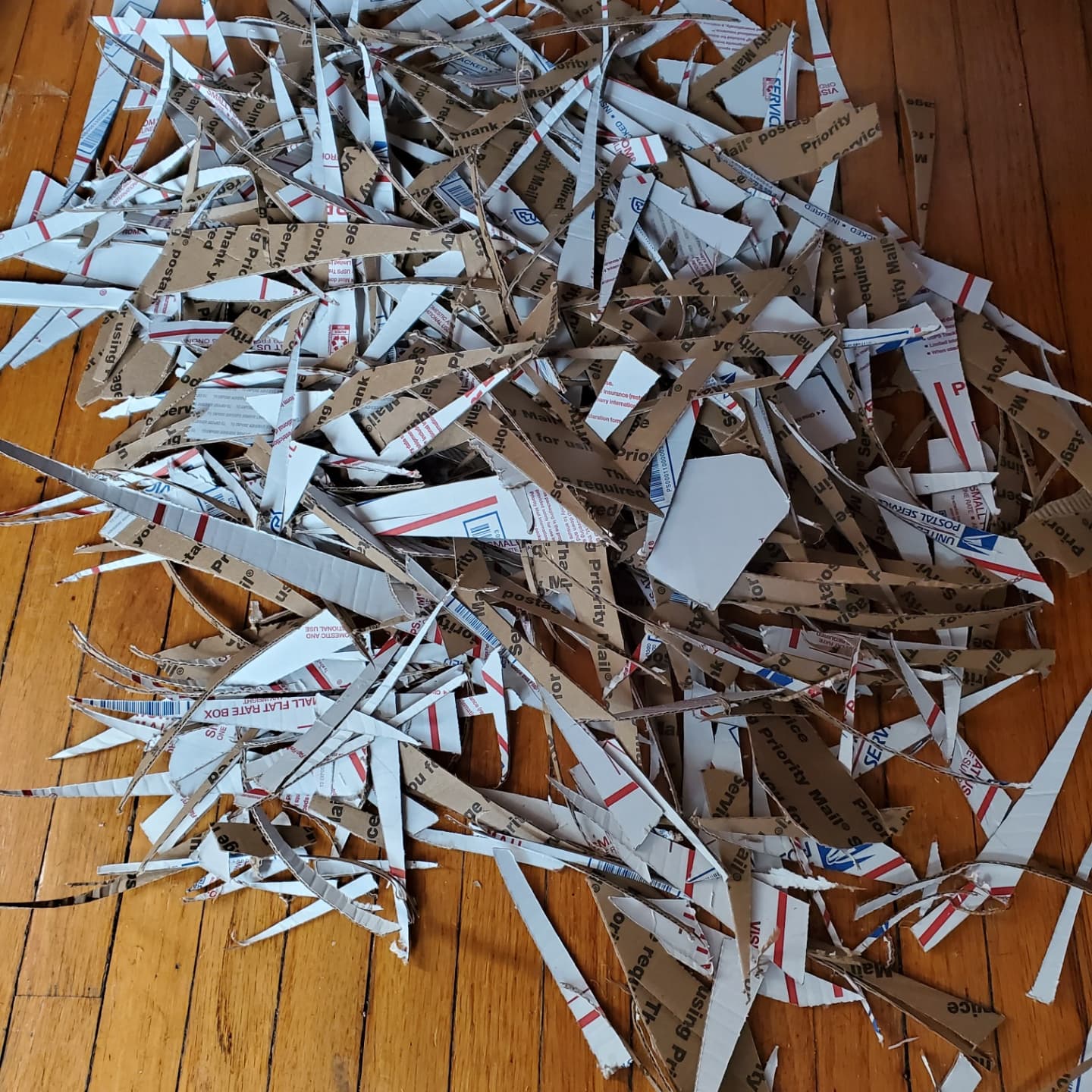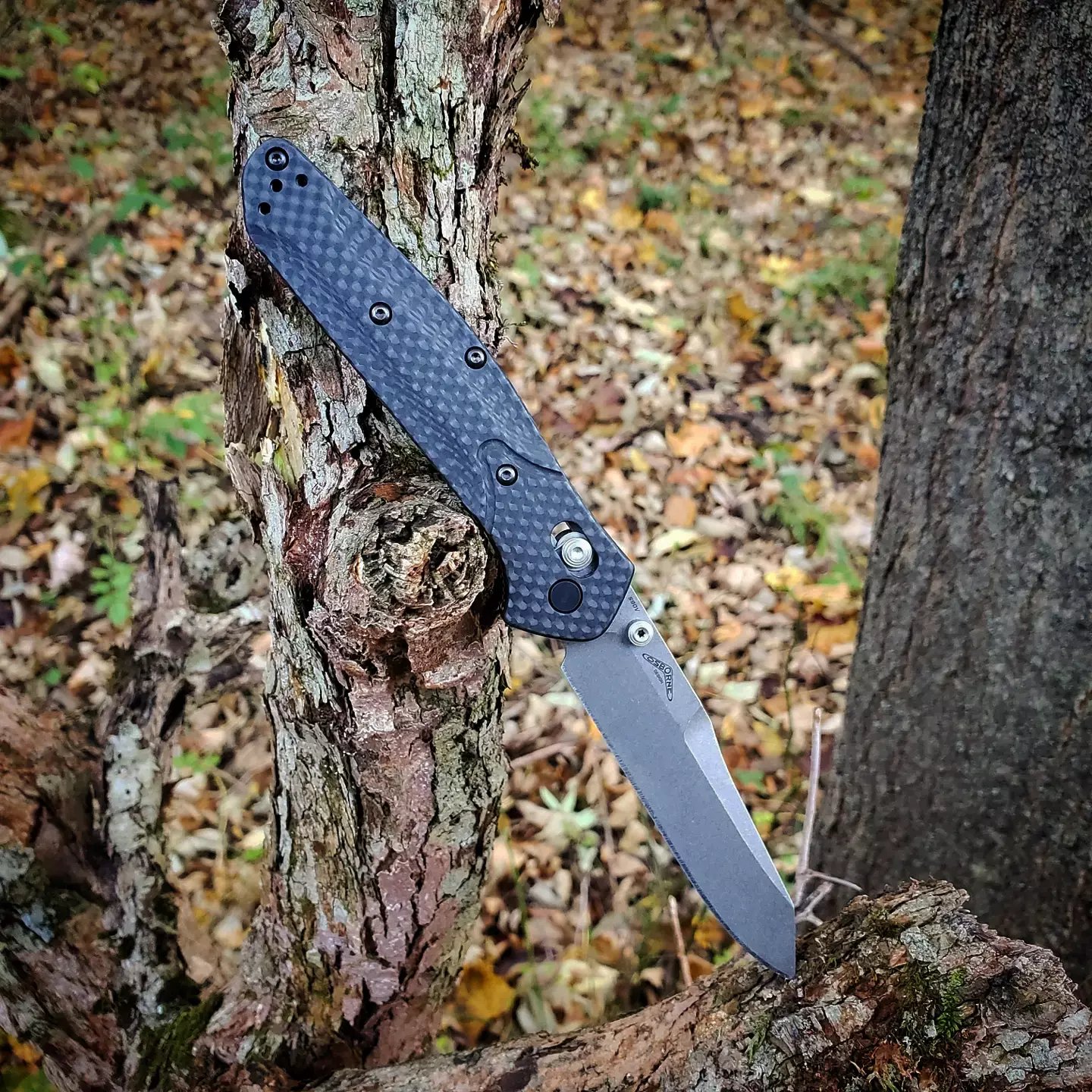We may earn revenue from the products available on this page and participate in affiliate programs. Learn More ›
I’ve carried a Benchmade Osborne Axis for eight years and it has seen constant use in the outdoors, at work, and in everyday tasks. The Benchmade 940 is slim—yet highly functional—size, perfect blade shape, and robust axis lock make it the ideal daily carry knife.
Now, what would happen if you took all the things that make a Benchmade 940, a great EDC and outdoor knife, and upgraded it? Well, you would end up with the 940-1, which, in my opinion, is one of the best folding knives made.
The 940 comes in four main variations, the 940 Osborne, the 945 Mini Osborne, the 940-2, and the 940-1. All share the same design, but are made with different blade or handle materials. Over the years, I have owned most of the 940 variants, and I have been carrying the original 940 Osborne for nearly eight years. Recently, I have been putting its more premium version, the 940-1, with a carbon fiber handle and S90V steel blade, to the test in everyday life. I also cooked up some torture testing to see if this premium blade is worth the premium price tag.
Benchmade 940-1 Specs
- Action: Manual-opening
- Blade steel: S90V
- Blade length: 3.40 inches
- Blade thickness: 0.115 inches
- Open length: 7.87 inches
- Closed length: 4.47 inches
- Handle thickness: 0.44 inches
- Weight: 2.44 ounces
- Made in the U.S.
The Benchmade folding knife doesn’t feel big in your hand at a little shy of 4.5 inches closed, but when you open it up you wonder how they stuffed that much blade into a compact handle. You aren’t losing much blade real estate with the handle design, and I measured 3.42 inches from the farthest part of the handle to the tip of the blade. The form factor of the Benchmade 940-1 is identical to the original, but thanks to the carbon fiber, the 940-1 is about a half ounce lighter. It weighed in at 2.42 ounces on my scale. When opened, you’re looking at just shy of 7.9 inches overall length. All these numbers translate to a knife that you hardly feel in your pocket but can handle any EDC task without breaking a sweat.
Benchmade 940 Overview
Most people carry knives that feel good in the hand, and that can stand up to heavy use. That’s where the 940 shines. In pocket, it’s light and slim enough to not interfere with my phone, but when it comes out of the pocket, I don’t have to wonder if I have enough knife for the job. The S90V blade steel holds an edge for an incredibly long time in comparison to a budget folder, and with the right tools, doesn’t take that much more effort to sharpen.
In the Hand
The Axis lock makes one handed opening and closing a breeze, even with gloved hands, and works intuitively whether you are right- or left-handed. The carbon fiber handle scales are strong and lightweight, and the blue anodized aluminum stand-offs make cleaning easy. The handle is long enough to accommodate my hands with room to spare, even though I wear XL gloves, and is also comfortable for my 9-year-old daughter. It has a neutral handle shape that is comfortable for a wide range of hand sizes and various grips.
The Blade
The way the blade is ground provides plenty of strength at the tip, so opening a paint can with it won’t make you cringe with fear (I have opened more than a few of them). The reverse-tanto shape allows you to have a belly on the edge for slicing, but still have plenty of strength and geometry for piercing (I have also stabbed the afore-mentioned paint cans). The pivot and handle are strong enough for heavier work, as well. This year, I put up several treestands with the 940-1 in my pocket, and used it to take down several saplings and tons of branches. Are there tools better suited for that work? Sure. Was it pushing the limits of the Benchmade? Not even close. The point is, for a guy like me who treats his knives as tools, the Benchmade knife is pretty much the perfect pocket knife. If this is in my pocket, I can be sure it will get the job done, whether I’m at church or on a backcountry hunt.

Testing the Benchmade 940
Before I ran this knife through the gauntlet, I carried it for a couple weeks and just used it like I normally would. The edge from the factory was good, easily slicing paper, so I didn’t touch it. I opened and broke down about 50 boxes at my part-time job, I did some whittling, made a try-stick with it, and as mentioned above, I took it along to put in some tree stands, using it for branches, saplings, straps, and ropes. I basically cut anything that needed cutting during that time. All of this was done on the factory edge, which didn’t show any real signs of dulling after that. So, I left the factory edge on it for the torture testing as well, without any touching-up.
For the torture test, I did a head-to-head with the original 940 with S30V steel that was sharpened by me, and the 940-1 with its premium S90V steel and factory edge. Both edges would cleanly slice paper at the beginning of the test. I chose materials that were common to cut, and some things that I knew would test the steel. Here’s the series of tests I put both knives through:
- Slice 200 through feet of cardboard
- Cut ⅝ inch sisal rope 100 times
- Cut 20 zip ties
- 10 stabs into metal paint can lids
- Resharpening

I began by slicing through a little over 100 feet of cardboard (100 cuts in strips about a foot wide). After this, they both were slicing cleanly through paper, so I added another 100 cuts for both of them. They were both cutting cleanly after 200 feet of cardboard, but I could detect a bit more resistance from the original 940. The Premium S90V seemed to be holding up slightly better.
Since I was out of cardboard, I moved on to a 5/8 inch sisal rope. This stuff is pretty abrasive, and I have seen it scratch low-end steel. I started with 50 cuts on each blade, and at the end of the cutting, both blades were still cleanly slicing paper, with the 940-1 still having less friction. I went back and made another 50 cuts. When I went to the paper, the Base Model 940 had a slight hang-up on one spot of the edge, but was still slicing on the rest of the edge. The Premium 940-1 was slicing cleanly with no hang ups, and little friction.
After that, I cut through 20 zip ties each that were fastened to a 2×4. 10 were cut with downward pressure cuts, and 10 were cut by prying the tip under the zip tie, and rotating the blade under it to cut away from the 2×4. Neither blade had any damage or flat spots on the edge afterward.
Then came the metal paint can lids. 10 stabs each all the way down to the thumb studs. Sharpness was tested after each full-depth stab. The Premium blade definitely pulled ahead here. After the 6th stab, the Benchmande 940 started having hang-ups that would tear the paper, while the 940-1 was still slicing well after the 10th. It’s also worth noting that the 940 sharpened by me had a convex edge, which is tougher than the factory v-edge, and it began the test sharper than the factory edge on the 940-1. Even with those disadvantages, the S90V still outperformed the original model.
Just as important of a test is how easy the 940-1 was to resharpen. S90V is a very hard steel, which means it will take a very long time to sharpen on traditional stones. But, after a few passes on a medium diamond stone, a few more on medium ceramic stone, and a minute on a leather strop, the 940-1 edge was better than new. As for the 940, I brought it back to life on a Ken Onion Worksharp in about a minute since it had a convex edge. The Worksharp would also have easily brought the 940-1’s S90V back as well, but I wanted to keep it with a more factory-style edge.
What the Benchmade 940-1 Does Best
At the end of the day, the 940-1 is an awesome all-around knife. It’s tough and will hold an edge for a long time. And if you aren’t into sharpening, send it into Benchmade when it finally dulls, and they will do it for you for free. This blade performs really well as a hard-working knife, no matter what you’re cutting. It’s the perfect EDC blade for the office, or for the backcountry. It looks amazing with the carbon fiber handle and stonewashed blade. It’s also a great blade if you just appreciate the finer things in life, and don’t mind paying a premium for materials, craftsmanship, and a good warranty.

What the Benchmade 940-1 Does Worst
As much as I love this blade, it’s not perfect. I love the stoutness of the blade out by the tip, but the geometry of this blade means that there are knives that will slice better. For example, a Spyderco Paramilitary 2 has a broad blade, and a full distal taper to the tip. Those features help it slice through apples with zero effort. The 940-1 will split the chunks of apple as it cuts it, and will require more pressure. The trade-off is that I have reground dozens of Spydercos with broken tips, and only one Benchmade 940. The S90V steel is great for holding an edge, but in high-impact use, it can chip. It will also take longer to sharpen than softer steels. I recommend a diamond stone for sharpening S90V because natural stones have a hard time cutting the S90V.
The Upshot of the Benchmade 940
The Benchmade 940-1 has an impressive pedigree and this variant of the venerable 940 line delivers premium materials, looks, and performance. It also delivers a premium price tag. All things considered, this is one of the best EDC knives out there whether you’re taking it hunting, hiking, jogging, or for a day at the office. It has a permanent place in my blade lineup.


